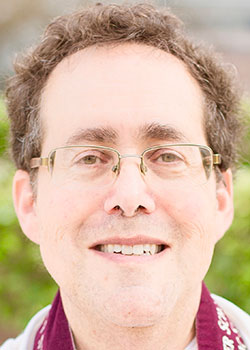Theology has become a hot topic among Jewish publishers these days. Recognizing a gap between new ways of expressing Jewish commitment and a cogent way of expressing that commitment in words, scholars and writers of every part of the Jewish spectrum are putting forth different metaphors to describe how God and the Jewish people relate.
Surely the most repeated metaphor is that of sovereign or ruler. God was described in the Torah and in the prayerbook as a potentate. In fact, that’s how almost every berakhah begins, addressing God as melekh ha-olam, the monarch of space and time. The power of this image of God is it reminds us of the awesome power undergirding both the cosmos and life. We didn’t choose to be born or to die, as the Mishnah tells us, and referring to God as a monarch reminds us of our obligation to gratitude and obedience.
Another popular image of God, particularly in recent years, sees God as a teacher. According to one Talmudic understanding of the afterlife, the souls of the righteous study Talmud directly from God. God is honen da’at, the one who bestows understanding and confers knowledge. The power of that metaphor, God as teacher and rabbi, is that is recognizes the use of the mind as part of the service of God and encourages us to cultivate clear and precise thought as a way to learn about the universe and improve the quality of life.
Yet another venerable metaphor for God is that of a warrior—the Torah speaks of God as a “man of war” who strikes out at Pharaoh and the oppressors of Israel with an outstretched arm and a mighty hand. While it may be jarring to the modern conscious to think of God as a combatant, Judaism understands that a passion for justice involves a willingness to fight against evil and against suffering. As the true judge (another traditional metaphor characterizing our relationship with God), God hates evil, and intervenes to oppose it. To be like God implies a similar willingness to stand up and to fight evil.
Literally hundreds of different metaphors are invoked in the Torah, the Talmud, Midrash, philosophical writings and modern thinkers (“fountain of life” and “force that makes for salvation” are but two of the more recent metaphors). Because God eludes ultimate understanding, because God is unique, there is no perfect way to describe God absolutely. To talk about God requires the use of metaphors, since all talk about God is at best an approximation.
That having been said, my favorite metaphor for our relationship with God comes from this week’s Torah portion. The Torah recounts the thrilling moment when the Jewish people gathered at the foot of Mt. Sinai to receive the Torah. Atop the mountain, clouds spread out, amid thunder and lightning. With the people behind him, Moses walked to the summit of the mountain and entered the canopy of the clouds. There, alone with God, he received the engraved tablets bearing the Ten Commandments.
The Midrash Mekhilta comments, “This teaches that the Divine Presence went forth to meet them like a bridegroom who goes forth to meet the bride.” According to this rabbinic understanding, God married the Jewish people at Mt. Sinai! Moses stood there as the best man, the clouds were the huppah, the wedding canopy, and the Ten Commandments were the ketubbah, the wedding contract binding God and the Jews in a public commitment of love and mutual caring.
What a remarkable idea! The metaphor of Sinai as marriage conveys that the core of our relationship with God is the consequence of a mutual love affair. God loves us and we respond by loving God in return. Because of this passion between the Jews and God, God offers a brit, an eternal covenant that will link us through the ages. The terms of our relationship are spelled out in great detail in the Ten Commandments and the other 603 mitzvot found in the rest of the Torah.
Every good marriage hearkens back to the courtship that established the core of the relationship. And every good marriage requires that both parties make a commitment to respond to each other’s needs and to grow with the other partner. As spouse, each agrees to take responsibility for the other and to offer care and succor in times of need. And, always at the core of a strong marriage, is a love that grows ever stronger over the years.
So it is with the Jewish people and God. The initial commitments and responsibilities that formalized our relationship are codified in the Torah. But openness to growth and new experience has resulted in a dynamic and vibrant relationship—just as it would for any loving couple. Judaism continues to grow and to develop as we and God continue to discover more and more about each other.
At the core of any marriage, beyond the changes, is something that remains constant—the mutual obligations to care and to respond, a willingness to receive the needs of the other as commandments. Because I love my wife, I respond to her priorities and her needs by making them my own. Because we are in a marriage with God, we take on God’s needs and priorities—the mitzvot— as our own.
That age-old love affair sustained our ancestors in ages past, and it continues to motivate and nurture us in the present age.
Happy anniversary, and Shabbat shalom.

